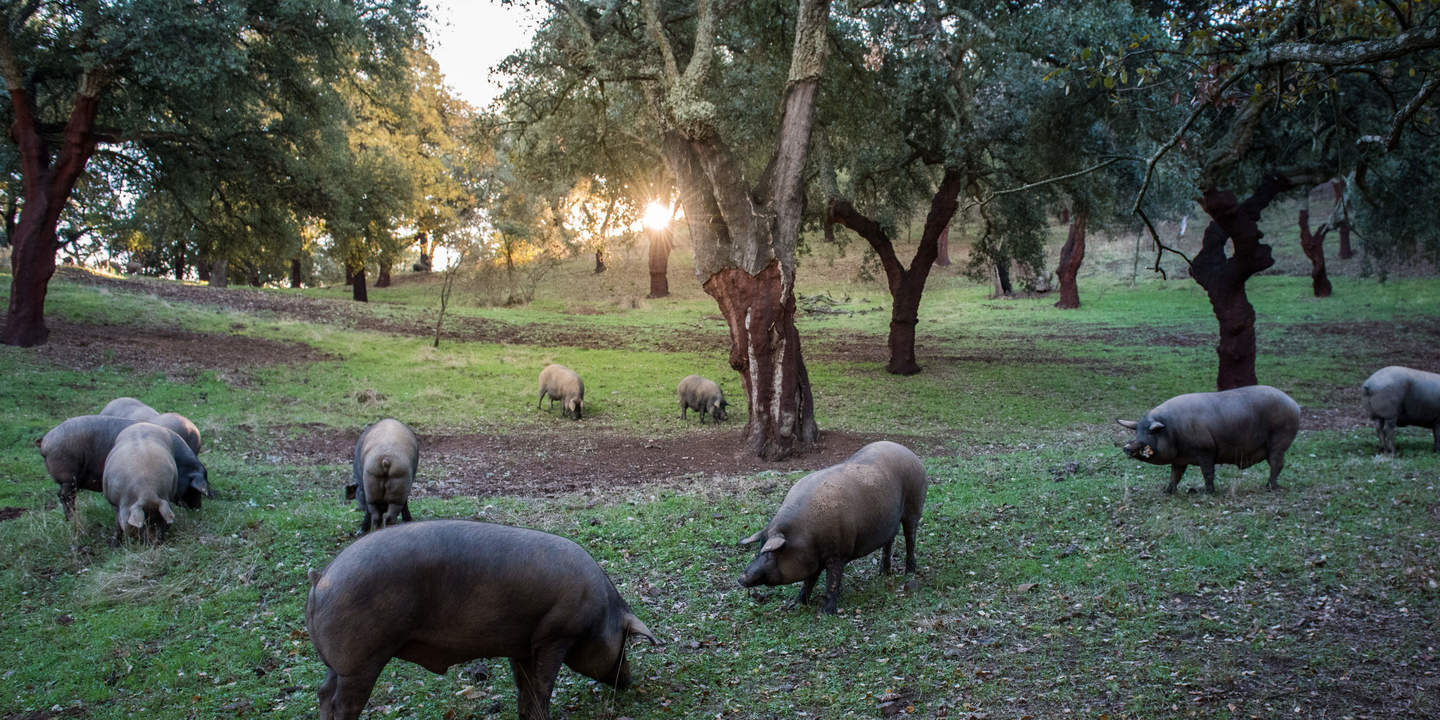The noble swine of Spain’s Extremadura region
Spain’s Extremadura region is characterised by its leafy oak groves, where the black Ibérico pigs feast to their hearts’ content on herbs and, in particular, acorns. It is thanks to them that the region is famous for a particularly delicious speciality: jamón ibérico, fine Spanish ham as soft as butter.
In April 2017, Bell acquired the production facilities of Spanish ham and charcuterie specialist Nobleza Ibérica in Extremadura, the Ibérico heartland in Spain’s south-west. Meat aficionados are familiar with the region for one particular reason: the ham of the black Ibérico swine known as jamón ibérico.
Half-wild noble swine
Ibérico ham is one of the most high-quality types of ham in the world. It is popular with experts and ordinary people alike due to its unique taste and delicate texture.
The producers of this exquisite delicacy are the Ibérico swine, a breed unique in the world. They differ from conventional domestic pigs mainly through their black colour and small size. From the viewpoint of physiognomy, they are more akin to wild boar, although they do not share the latter’s game flavour. The pigs are also referred to colloquially as pata negra («black hoof») as their feet are often black. However, this designation is no longer permissible in trade.
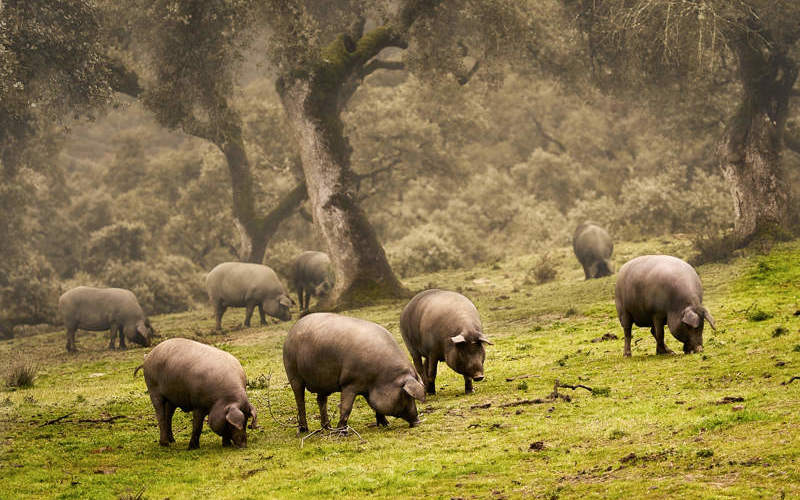
The animals live semi-wild in the Spanish dehesa, a sparse forest of holm and cork oak trees. The pigs feed on natural fodder such as acorns, grass and aromatic herbs in the oak groves. Their consistent roaming in search of food results in a longer fattening time of up to 14 months and consequentially to a better distribution of the fat.
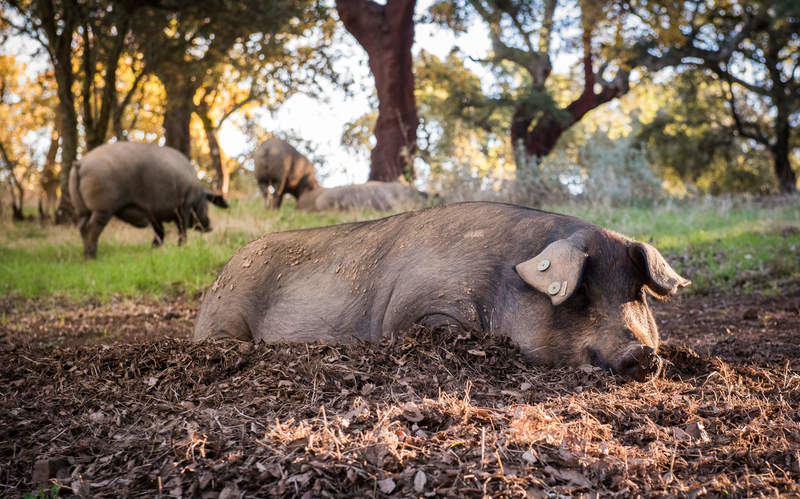
During the monatanera, which lasts from autumn to winter and sees the acorns fall from the trees, the pigs feast almost exclusively on the acorns. The swine virtually double their initial weight during this time. The oil contained in the acorns is stored in the muscles and gives the ham its unique, buttery-nutty taste.
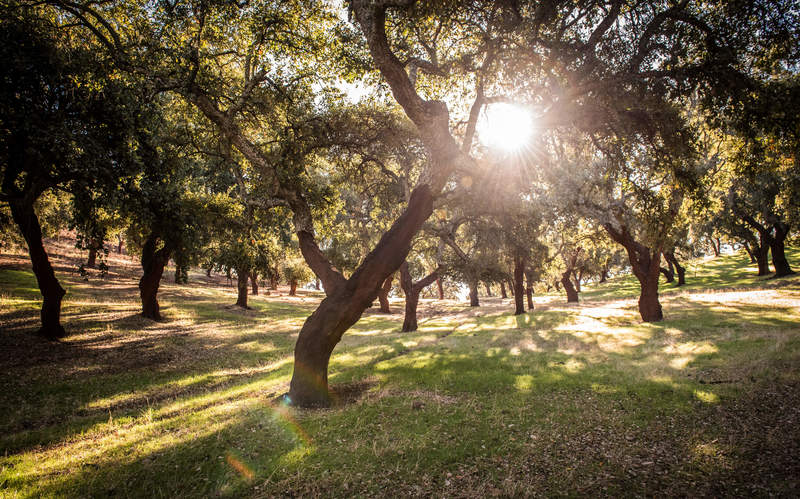
Bellota, cebo and cebo de campo
The quality of Ibérico ham depends predominantly on how the animals are raised and fed. The best ham, the jamón ibérico de bellota, stems from animals that feed exclusively on acorns during the last phase of fattening. They eat between six and ten kilograms of acorns per day. They are not given any fattening fodder and, with the exception of their first few weeks of life, grow up in the wild. Quality is of course also influenced by the maturing period: a jamón ibérico de bellota ham can take up to 24 months to mature.
In comparison, the jamón ibérico de cebo comes from animals that are fed exclusively fattening feed. Pigs used to produce jamón ibérico de cebo de campo are given fattening feed to start with, then acorns and, during the final fattening phase, fattening feed once again. The general rule applies: the higher the proportion of acorns in the animals’ feed and the longer the fattening and maturing period, the higher quality the ham.
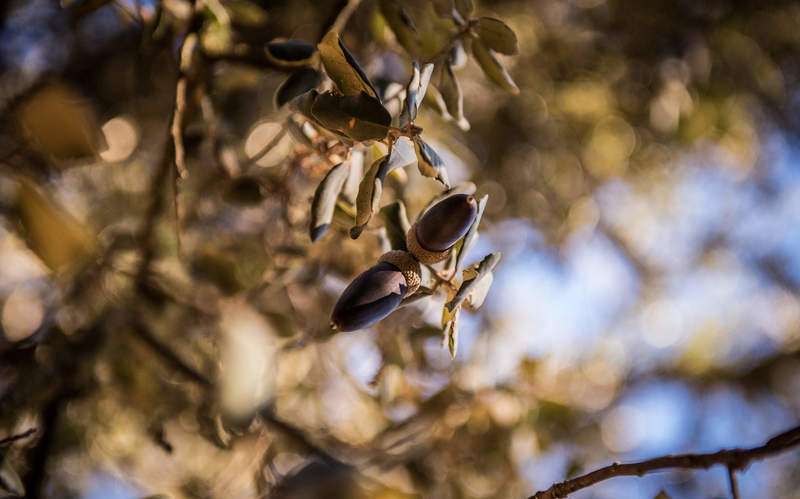
However, a jamón ibérico de cebo or de cebo de campo is still quite a way ahead of conventional hams when it comes to quality: for genetic reasons the fat of Ibérico pigs is deposited in muscle tissue, and not just in the skin, which makes the meat especially aromatic.
Popular Spanish charcuterie
However, the meat from Ibérico pigs is not just processed to make jamón (ham) and palleta (shoulder). Other Spanish charcuterie products known as embutidos are also produced from the high-quality meat of the Iberian swine.
Probably the most well-known of these is chorizo, a spicy paprika sausage. Less well-known is lomo, tenderloin with the fat removed which is marinated and then air-dried in a natural casing.
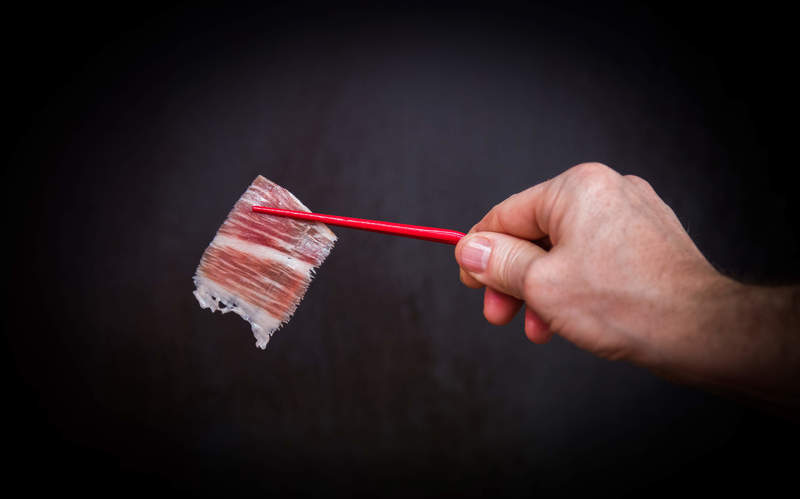
Morcón is leaner than chorizo and has a slightly lower fat content.
Salchichón is a coarse dried sausage quite similar to salami and is considered a popular delicacy.
These charcuterie specialities are usually sliced and enjoyed as small snacks between meals and count among the highly popular tapas dishes.
